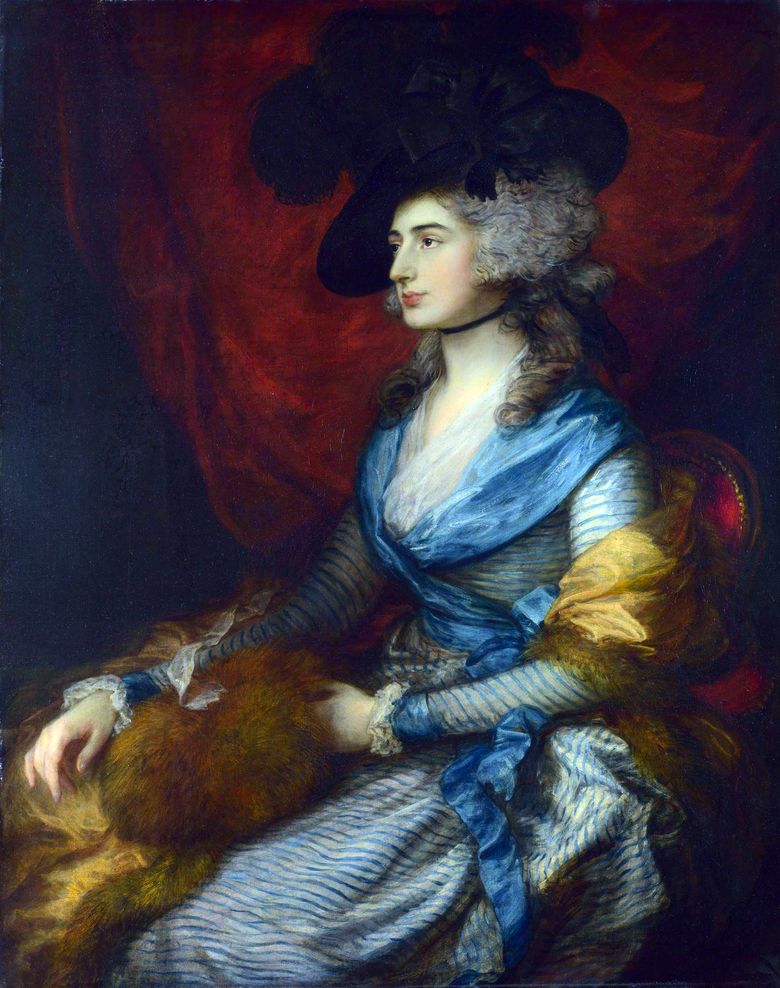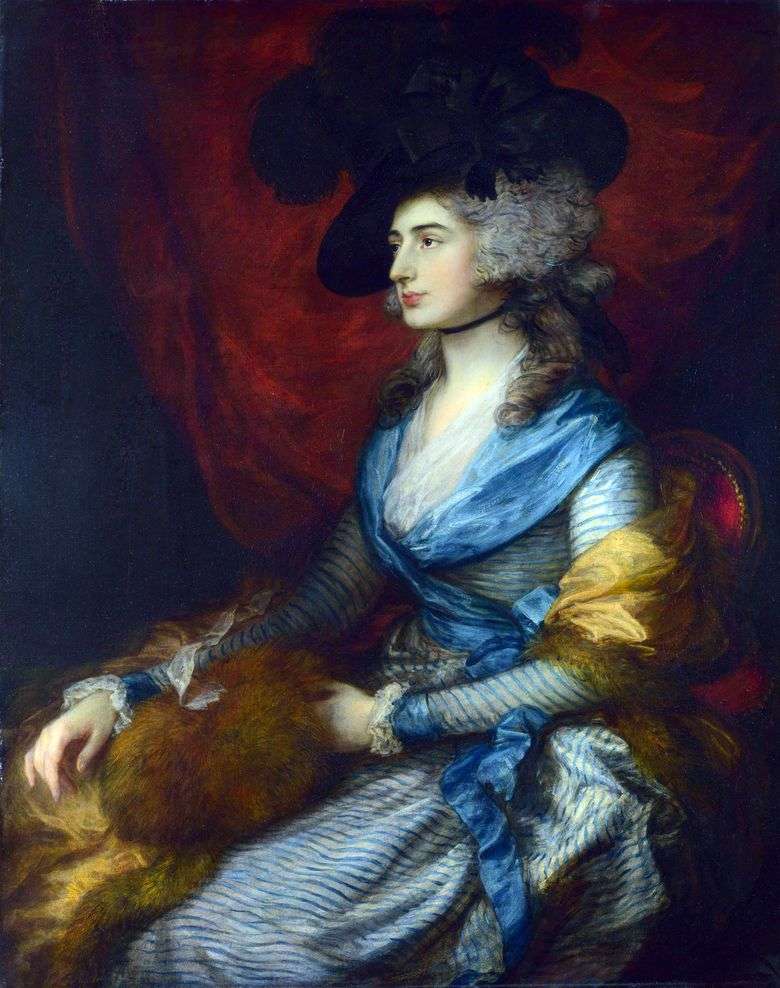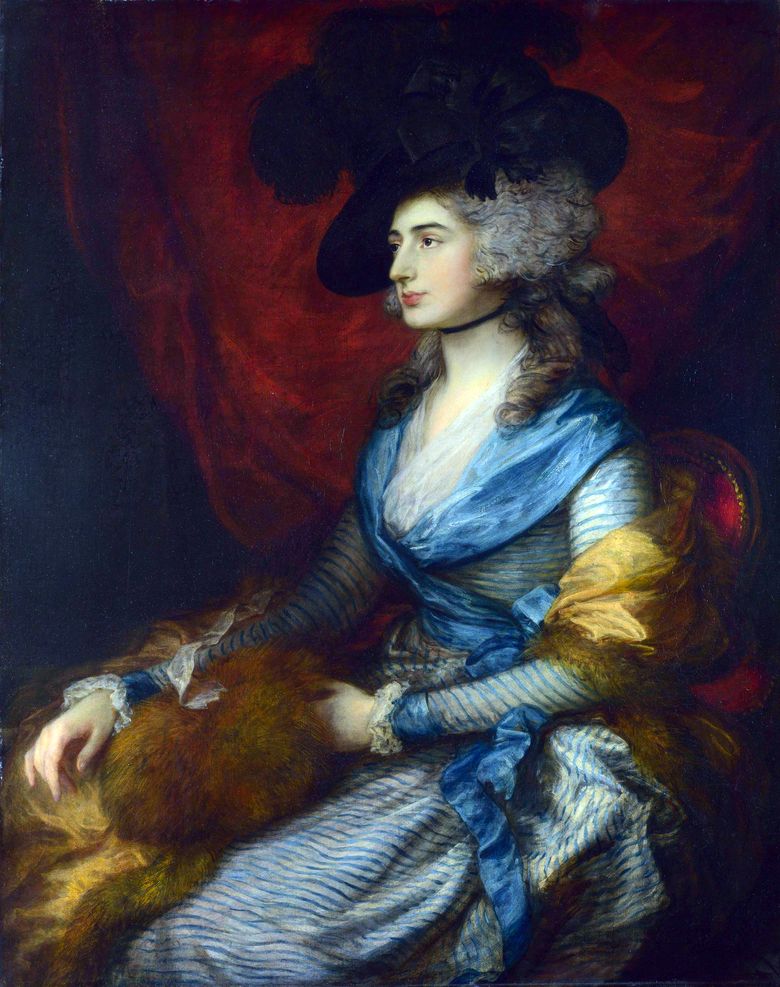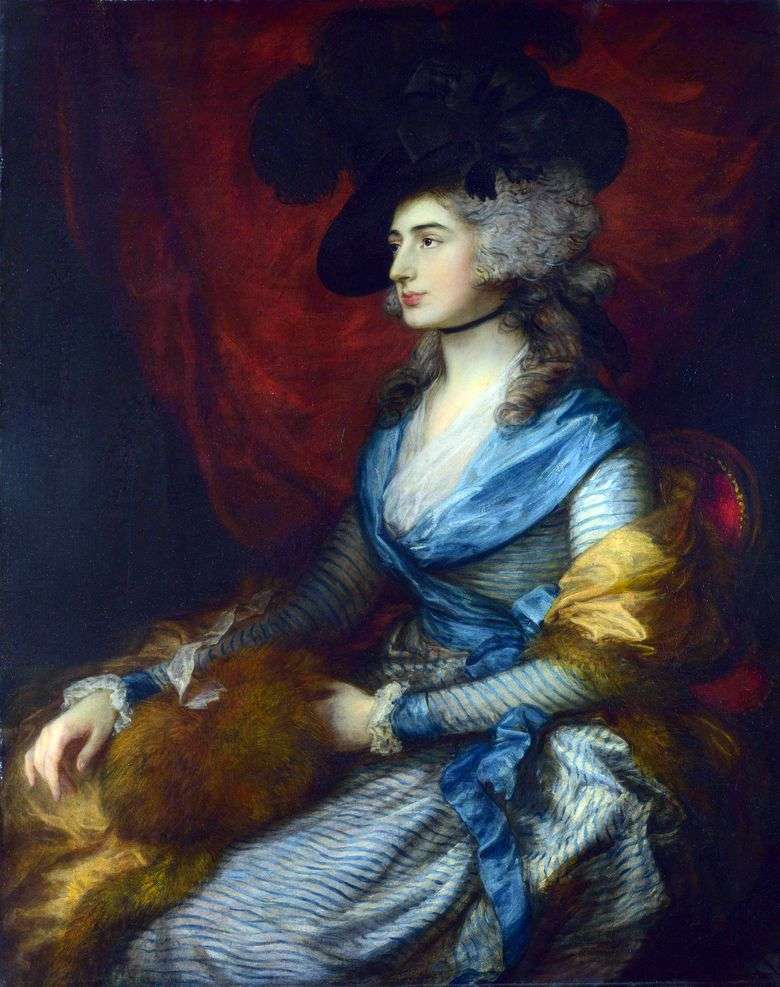
At the dawn of his work, Thomas Gainsborough admitted that he never liked to paint portraits. But it was the portraits that brought him the greatest glory. Gainsborough argued that he never tried to compete with another prominent portraitist of the time – Reynolds, but the creativity of both clearly developed in a mutual rivalry. In general, both Reynolds and Gainsborough are two great masters who made a huge contribution to the development of the English portrait genre and glorified it, although everyone went in the development of this genre in their own way.
Gainsborough did not like secular life, he was burdened by it. He always dreamed of living in rural space, working in the genre of landscape art, and not write off portraits from gentlemen and ladies. He did not recognize anyone’s authority and theories in the visual arts, so his brush was subject to a greater degree of the artist’s intuition than to any rational principle. Gainsborough never, however, sought to artificially fill the portrait with symbols, he captured what the painter’s eye saw. His portraits are distinguished by simplicity, but that’s why they are more inspirational and creatively free than the work of Reynolds. He did not fight against the tastes of customers, but in this framework he was able to remain original and unique.
One of Gainsborough’s achievements was his discovery of the possibilities of cool colors as the leaders in the picture. Against this always acted Reynolds, considering the gray-blue range necessary only for the shade of a more saturated red-brown union. Gainsborough in some of his works makes the blue color dominant and first shows what emotional saturation can be achieved by using cold tones. These experiments include a series of “blue” portraits – “The Boy in Blue”, “Portrait of a Lady in Blue” and some others. In them, Gainsborough masterfully plays with various shades and semitones of the main color, revealing silvery, pearly, pearly the ebb and flow of the sea.
Written in the late 1770’s. “Portrait of a Lady in Blue,” also known as “The Portrait of the Duchess of Beaufort”, is among the most accomplished works of Gainsborough. This painting is now the only work of the artist in the Hermitage, one of the most poetic painters of England. The refined tonality of the palette, the special picturesque manner of applying colors to the liquid translucent layer, quick strokes applied by a fine brush, give the image of an English aristocrat a spirituality and grace.
The image of the Duchess de Beaufort – a young woman in an open dress – is gossiped by the artist from unfinished, barely planned movements: a gliding dreamy look, lips, ready to smile, a barely noticeable turn of the head… A blue scarf, slipping off her shoulders, bracelet hand, powdered hair combed up and put in a complex hairstyle, topped with a small bonnet with ostrich feathers and a blue ribbon. It is some incompleteness, understatement and makes the image of the Duchess especially alive and charming.
To the same series refers and “Portrait of Sarah Siddons.” Sarah Siddons is a famous actress, one of the divas at the time of Reynolds and Gainsborough, whose work was honored for great honor. Both artists, each in due time, painted her portraits, but in different ways approached the solution of the artistic problem. In Reynolds, she appears in front of the viewer in the image of a tragic muse, and the entire portrait is full of symbolic-color techniques.
A completely different woman looks from the portrait of Gainsborough. Here the viewer sees an elegant strict lady who quietly sits and looks thoughtfully away into the distance. But if you look at the image of a woman for a long time, you gradually get the feeling that it’s not just some kind of an English lady; in its chiseled and attractive features one feels a certain special nobility, and the nobility is not of blood, but of spirit. This woman – first of all, a character, a person and should be interesting from this position. And behind the external calmness, inner comprehension opens, which gives rise to a feeling of understatement, a kind of mysterious halo around the image.
In terms of the artistic embodiment of Gainsborough, as in many other paintings, the color accent shifts to cold tones. Blue, white and black – these are the defining principles, the unity of which looks unique against the background of a dark red cloth, designed only to shade them.
 Portrait de Sarah Siddons – Thomas Gainsborough
Portrait de Sarah Siddons – Thomas Gainsborough Portrait of actress Sarah Siddons by Thomas Gainsborough
Portrait of actress Sarah Siddons by Thomas Gainsborough Portrait of the Duchess de Bowfourt (The Lady in Blue) by Thomas Gainsborough
Portrait of the Duchess de Bowfourt (The Lady in Blue) by Thomas Gainsborough Retrato de Sarah Siddons – Thomas Gainsborough
Retrato de Sarah Siddons – Thomas Gainsborough Portrait de l’actrice Sarah Siddons – Thomas Gainsborough
Portrait de l’actrice Sarah Siddons – Thomas Gainsborough Portrait of Eneaj Lloyd with Sister Lucy by Thomas Gainsborough
Portrait of Eneaj Lloyd with Sister Lucy by Thomas Gainsborough Retrato de la actriz Sarah Siddons – Thomas Gainsborough
Retrato de la actriz Sarah Siddons – Thomas Gainsborough Portrait of Mrs. Graham by Thomas Gainsborough
Portrait of Mrs. Graham by Thomas Gainsborough